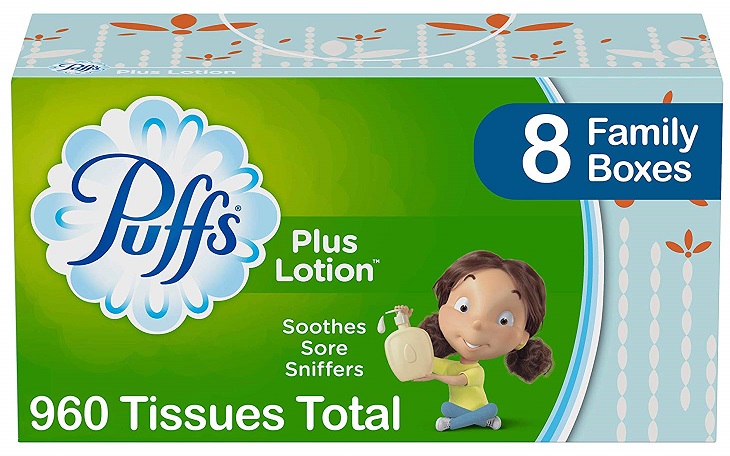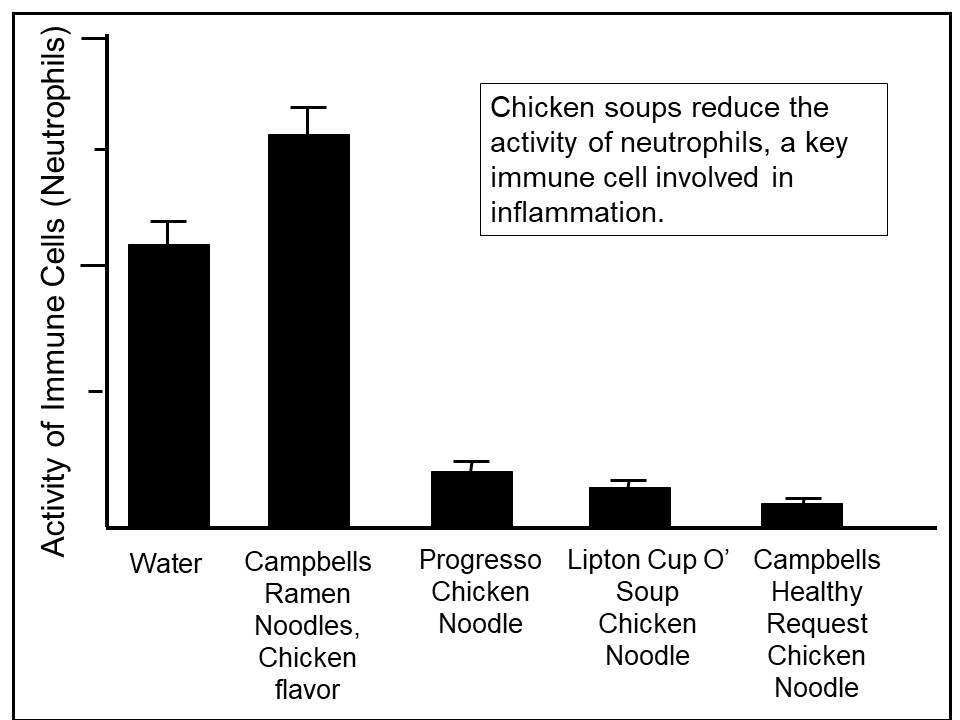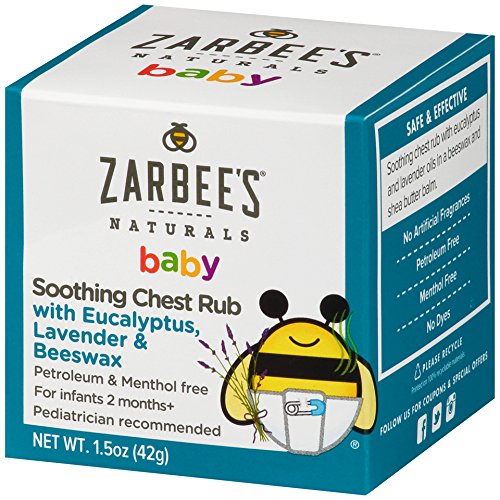Note: As an Amazon associate, I may stand to profit from purchases made from links within this post.
That first time your child comes down with a cold and you find out that kids younger than 4 can’t have any cold medicine, it’s impossible not to feel helpless. Your child is suffering with those terrible cold symptoms – snotty congested nose, headache and awful sounding cough. Yet every form of relief that you would normally use is deemed unsafe for your child.
Another mom scientist blog recently did an excellent post detailing the dangers of some common cold remedies for children. But it is not enough to tell parents what not to do when their children are suffering with cold symptoms. There are things you can do to treat cold symptoms in your children by getting to the root of their causes. These methods can be used for both children and adults!
First, let’s talk about what causes those cold symptoms
We tend to define a cold as that runny nose, sore throat, and cough that we always get. It is true that those symptoms indicate that you have a cold in your body, but those symptoms are not actually caused by the cold virus itself. Those are actually the symptoms that your immune system is fighting the cold. Here’s what happens when you get a cold, and why you have these symptoms:

Here’s how the symptoms of the common cold usually progress.
- Scratchy throat – this is usually the first symptom of a cold, and it happens because your immune cells are producing ‘bradykinins’, which interact with sensory nerves in your throat. This can often progress into a full-blown sore throat, but it’s not the virus causing the pain. It’s your own body’s response!
- Runny Nose – Not only do bradykinins trigger those pain receptors in your throat, they trigger inflammation in your nose and throat and cause fluid to fill the area. This is why your nose will start running. Many think that histamines, which are responsible for allergy symptoms, are responsible for the runny nose during a cold, but histamine does not appear to be involved in the response to the common cold. Still, many cold medicines contain anti-histamines because they are similar enough in structure to bind to the receptors that are involved.
- Stuffy Nose– As the cold progresses, your runny nose may turn into a stuffy nose. Many think that this is because there is a lot of mucus in there. In reality, your nose feels clogged because your nasal passages are inflamed and the blood vessels are dilated and large, blocking the passages. You also may be dehydrated, which would make the mucus that is in there thicker. For this reason, blowing your nose won’t work! It will just cause more inflammation, and stuffiness will get worse.
- Laryngitis – As the congestion builds, you may get what many refer to as a “frog in the throat”. Many people think that that ‘frog voice’ stage happens because there is just so much mucus trapped in the throat area. It is true that there is mucus in there that can interfere with the movement of your vocal cords, but it is also caused by inflammation in the area and dehydration as well.
- Cough – Usually later in the cold, a cough is triggered by two things: (1) a reflex that is triggered by mucus that stimulates your sensory nerves in your larynx, and (2) inflammation in the lining around your larynx that triggers the same reflex. Most cold medicines provide an expectorant that causes you to cough up the mucus.But coughing up mucus too much could backfire! Instead, it will cause more inflammation, which causes more discomfort and coughing.
- Headache – the cause of a headache during the common cold can be two-fold. First, your immune cells produce substances called ‘cytokines’ that can trigger fluid accumulation and pain in your head. But headache may also be caused by inflammation of the sinus passages, which can also make you feel dizzy.
So how can we treat cold symptoms without cold medicines?
For us adults, medicines are generally helpful, though at times they may dry you out and make the problem worse. The best way to ease the symptoms of a cold is to combat the inflammation, and avoid causing more. Here are some science-backed options to treat cold symptoms that are safe for even young kids:
1. Ibuprofin (e.g. Children’s Advil)
This is an over-the-counter anti-inflammatory drug that is safe for kids over 2 years old. Never give this to a child under 2 unless directed by a doctor, though. This will help to decrease the inflammation in the nasal and sinus passages, which will help decrease the intensity of the sore throat, the stuffy nose, and the headache.

2. Tylenol
Luckily there is at least some medication that your infants can take. Infant Tylenol comes in doses safe for infants, and while this is not an anti-inflammatory drug, it can calm the nerve cells that are irritated by the bradykinins, soothing the sore throat. It will also reduce a fever, which can be present during a cold.
Infants’ Tylenol Acetaminophen Liquid Medicine

3. Hydration (lots!)
Staying hydrated helps to thin out the mucus, which will help it to flow through your child’s system. You want mucus to flow because it is flushing out the virus! In addition to that, sometimes sore throat pain is caused by mucus that has dried and sticks to the back of the throat. Hydration helps to prevent this. As a rule of thumb, try to get your child to drink enough water that his/her urine is a pale yellow color. You can even make this into a fun “what color is my pee now” game to keep your child interested. There is also an app called Plant Nanny that you can download, and your child can have fun keeping the plant alive while drinking lots of water.
4. Saline Nasal Spray
This is the one that every doctor will recommend for young kids, and with good reason! Saline nasal sprays help wash out the bradykinins that trigger mucus production. It also helps to decrease inflammation, and it helps reduce the fluid accumulation in the nasal passages as well.
If you have an infant, make sure to have an aspiration bulb handy to suction the nose after dropping a few drops of saline in each nostril. For all kids and adults, go for a nasal saline formula that doesn’t contain the preservative benzalkonium chloride (like the most common one in supermarkets, Little Noses), because some studies suggest that this preservative can actually make symptoms worse.
Try Genexa Saline Care for Infants (Preservative-Free)
5. Ice pops!
What kid won’t jump at an ice pop? Since inflammation is such a big driver of many cold symptoms, soothing the respiratory tract with ice chips or ice pops can be helpful, especially for scratchy or sore throats. This also hydrates the area, which can help flush mucus and alleviate a cough.
Here’s a great option for providing hydration without the added sugar in most pops:
Pedialyte Freezer Pops – Assorted Flavors, 2.1 oz, 16 ct
6. Warm liquids
While ice pops can help decrease inflammation, studies show that warm liquids, like tea, can help soothe the pain receptors in the throat, help dissolve and loosen nasal mucus, and may even stimulate mucus production to serve as an expectorant. In fact, warm liquids are even more effective at providing relief from cold symptoms than cold liquids. This may be particularly helpful if your child has a cough.

7 Honey
While you can’t give kids under 6 years old cough syrup, studies show that a teaspoon of honey can work almost as well! Honey has both antibacterial and antiviral effects. In addition to that, some studies suggest that the sweetness of honey acts to stimulate the production of mucus and saliva in the throat that calms cough by reducing inflammation. There’s even evidence that the sweet taste acts directly on the brain to calm the coughing response!

Of course, we all know that kids can be finicky about taking in unfamiliar foods and liquids. If your child won’t take honey from a spoon, you can also dissolve a teaspoon of it to some warm tea to get a similar effect. You can also try the Zarbees dark honey cough syrup. It might go down easier since it comes in cherry and grape flavors. I recommend avoiding the Zarbees with ivy leaf and elderberry, because there isn’t enough information about whether those are safe for children.
Zarbee’s Naturals Children’s Cough Syrup* with Dark Honey
By the way, if you have an infant under 12 months old, do not use honey. It can carry spores of Clostridium botulinum, which can cause botulism in an infant with an immature immune system.
8. VapoRubs
Remember that one of the prime causes of a stuffy nose is the dilation of blood vessels in the nose, which causes the passages to swell and close off. Most VapoRubs contain chemicals that constrict those blood vessels and open the airways. Vicks VapoRub is great for adults and children over 2. The active ingredient is menthol, a good vaso-constrictor. A study showed that rubbing a VapoRub containing menthol on children aged 2-11 that had the common cold provided significant relief from nasal congestion.
If you have an infant, both Vicks and Zarbees have made Baby Rubs. The ingredient in these that may help with congestion is Eucalyptus. While there are no real studies examining the effectiveness of eucalyptus on the common cold, some studies suggest that eucalyptus can also act to constrict blood vessels. Unlike menthol, there are no known side effects of using it topically in an ointment at this low concentration. These ointments also tend to include lavender, which can have calming effects.
Zarbee’s Naturals Baby Soothing Chest Rub
9. Try a compress scented with essential oils for sinus congestion, headaches and/or earaches
The one that I absolutely LOVE to use is a head/eye compress that has the scents of eucalyptus and pepperment. I’ve already talked about the potential benefits of eucalyptus. Peppermint also contains menthol, which, as mentioned above, can help constrict blood vessels. I barely get to use mine because my kids have outright stolen it since they love how it feels so much. If you have an infant, never put a mask like this over their faces, though if you hold it nearby, just the scent could provide some of the same benefits.
Here’s the one I like: Spa Comforts Breathe Easy Microwaveable Mask
If you don’t have one of these or want a cheaper version, you can fill a clean white sock with rice or coarse sea salt and put two drops each of eucalyptus oil and peppermint oil. If your child gets an ear ache with the cold, this “salt sock” can be used to help relieve those symptoms too!

10. Tissues that contain moisturizers
I still remember a day when I was a young kid and I had wiped my nose so often during a cold that my nose actually looked like it was bleeding because it was so raw. Sometimes we forget that part of cold discomfort is from simple nose irritation. Using tissues that contain moisturizers make a huge difference here.
My favorite are Puffs Plus Lotion Facial Tissues

11. Diaper rash cream for their…noses?
Even when using those nice moisturizing tissues, too much blowing can still lead to irritation. In infants, the mucus can often dry on the outside of the nose, also causing irritation. Diaper rash cream to the rescue! Putting a little dab of cream on the outside of the nostrils can help ease nose irritation. Just don’t put any inside the nose because there have been no studies testing the safety of breathing in diaper rash cream, and I would suspect those studies would find that it isn’t good for your kids.
12. Good old chicken soup!
All the moms and grandmas out there who fed us chicken soup when we were sick were actually right! It turns out that chicken soup is good for more than the soul. A study showed that sipping chicken soup through a straw loosened nasal mucus even more than other hot liquids, perhaps due to its aromatic effects. In a very cool study, researchers put chicken soup in a chamber with immune cells and found that, when combined with the soup or its vegetable and chicken ingredients separately, these cells decreased their activity (called chemotaxis).

This means that chicken soup can help treat cold symptoms by helping loosen mucus and decreasing inflammation. The combined ingredients in the soup may work together to provide relief.
What’s the Take-Home?
As moms, it’s torture to watch our kids suffer with colds that we are not allowed to medicate. Not only that, but there are so many questionable and untested methods that are touted on the internet as good remedies for common colds. As a rule of thumb, avoid medicines, herbs, and homeopathic therapies. They can all reach levels where they are toxic, and the toxicity limits are still unknown for young children. Try combining these safe methods to soothe cold symptoms in your kids, and the cold will run its course before you know it.
Read my post on how to avoid getting infected with the flu to see methods that can not only help you and your kids to avoid the flu, but can also help to avoid the common cold as well.















